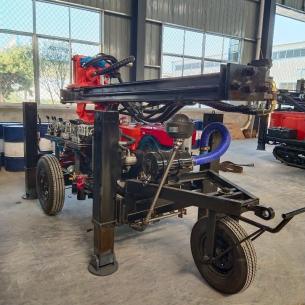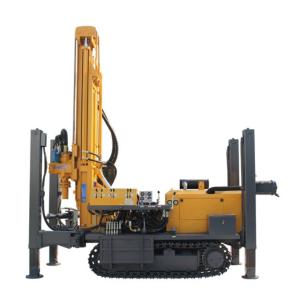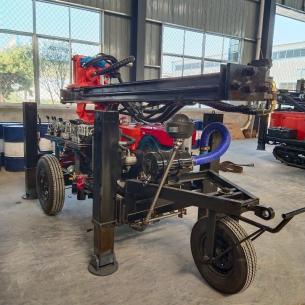DTH drilling:Drilling process
In underground and rock drilling, DTH drilling technology is highly favored for its efficiency and reliability. Whether you are a mining professional, a geological engineer, or simply curious about modern drilling technology, it is important to understand the complete DTH drilling process.
Detailed process of DTH drilling
Step 1: Site Investigation and Drilling Planning
Before commencing any drilling operation, a site investigation is essential. Engineers need to assess rock formation type, geological structure, groundwater levels, and potential obstructions to determine the optimal drill hole location, angle, and depth.
Step 2: Drill Rig Installation and Commissioning
Based on the drilling design, select an appropriate DTH drill rig and securely mount it on the work platform. The installation process includes leveling the rig, connecting the air compressor and piping system, and ensuring all safety devices are in place.
Step 3: Hole Opening and Initial Stabilization
Use a starter rod and a suitable drill bit to begin drilling. Initially, low pressure and rotation speed are typically used to ensure the hole is accurately vertical or at the desired angle and to prevent collapse.
Step 4: Drilling and Impact Fracturing
Power Transmission: High-pressure compressed air is generated by the drill rig's air compressor and delivered through the drill pipe to the down-the-hole hammer at the bottom of the hole.
Impact Operation: The air drives the piston inside the down-the-hole hammer to perform high-frequency reciprocating motion (typically hundreds to thousands of impacts per minute), transmitting tremendous impact energy directly to the drill bit.
Rock Fracturing: The drill bit, under immense impact force, breaks the rock below. The tungsten carbide balls on the drill bit engage the rock, causing cracks and ultimately breaking it.
Step 5: Chip Removal and Holewall Maintenance
Efficient Chip Removal: After completing its driving task, the same compressed air stream carries the crushed rock chips back to the surface at high speed along the annular space between the drill pipe and the hole wall. This keeps the hole bottom clean, prevents re-fragmentation, and significantly improves drilling efficiency.
Holewall Stabilization: For unstable formations, drilling fluid or stabilizers can be injected to maintain the hole wall and prevent collapse.
Step 6: Adding Rods and Continuing Drilling
When a drill rod is fully driven in, the drill stops impacting and rotating. The operator adds another drill rod, lowers the drill string, and continues drilling. This process repeats until the target depth is reached.
Step 7: Final Drilling and Removal of Drilling Tools
Once the desired depth is reached, the air supply is stopped and the drill rig is lifted. The drill pipe is removed section by section, and the down-the-hole hammer and drill bit are finally removed for cleaning and inspection, preparing for the next operation.
Common Applications of DTH Drills
Mining blasthole drilling: This is their primary application, paving the way for subsequent blasting.
Hydrological and geothermal wells: Used for drilling water wells and geothermal heat exchange wells.
Foundation construction: Used for installing anchors, micropiles, etc. at construction sites.
Quarrying: Used for rock separation and blasthole drilling in quarries.
Conclusion
The DTH drilling process is a systematic process that integrates efficient power transmission, continuous chip removal, and precise operation. Its core lies in directing impact energy to the hole bottom, achieving unmatched drilling efficiency in hard rock formations. Understanding and implementing DTH technology is crucial to success for any project requiring reliable, efficient, and cost-effective hard rock drilling solutions. With continued technological advancements, DTH drilling will continue to play an indispensable role in resource extraction and infrastructure development.





